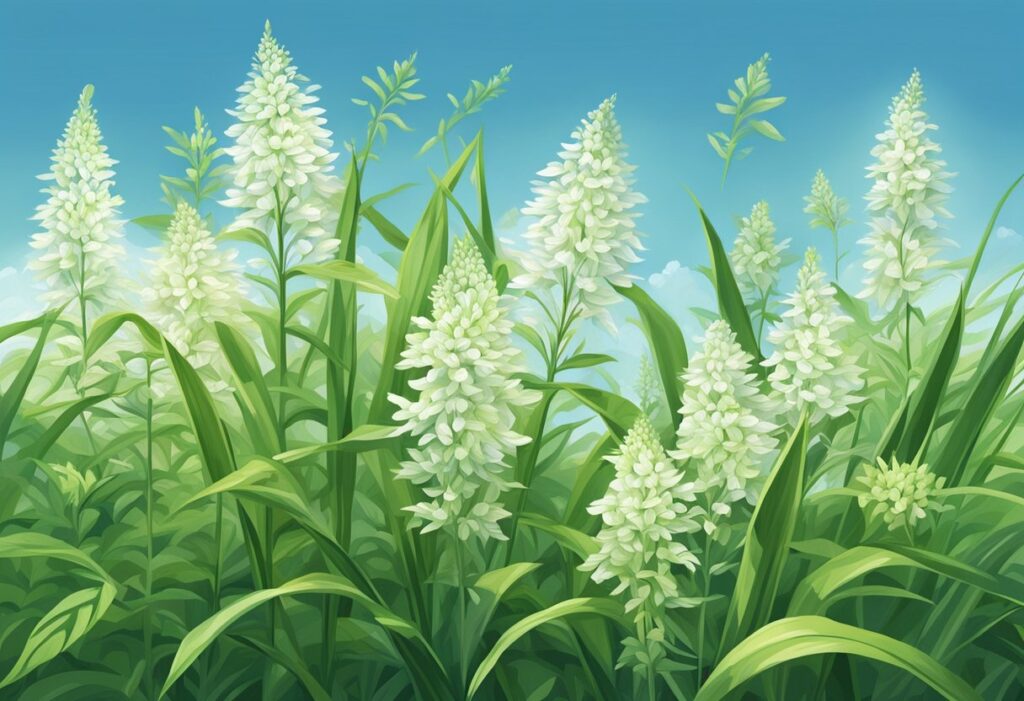
White Widow is a hybrid strain that requires specific climate conditions to thrive. It prefers a warm and dry climate, with low humidity and plenty of sunshine. The ideal temperature range for White Widow cultivation is between 70-80 degrees Fahrenheit during the day and 50-60 degrees Fahrenheit at night. It is important to maintain a consistent temperature range to avoid stressing the plants and affecting their growth.
White Widow is a strain that requires low humidity levels, preferably between 40-50%. High humidity levels can cause mold and mildew to grow on the plants, which can damage the crop and reduce the THC content. Therefore, it is essential to monitor and control the humidity levels throughout the cultivation process.
The United States has various climates that can support the cultivation of White Widow. However, some states have more favorable weather conditions than others. Here are the top states for cultivating White Widow based on their climate:
In conclusion, White Widow requires a warm and dry climate with low humidity levels and plenty of sunshine to thrive. California, Arizona, Colorado, and Oregon are some of the top states for cultivating White Widow due to their favorable weather conditions. When cultivating White Widow, it is essential to monitor and control the temperature and humidity levels to produce high-quality cannabis with high THC content.

When it comes to cultivating White Widow, adapting to climate change and extreme weather is an important consideration. Rising temperatures, drought, wildfires, and flooding are just a few of the challenges that growers may face. The National Oceanic and Atmospheric Administration (NOAA) predicts that climate change will continue to cause more frequent and severe weather events, which could impact cannabis growers across the country.
In order to adapt to these challenges, growers should consider implementing climate-smart agriculture practices, such as using drought-resistant strains, improving soil health, and investing in irrigation systems. Additionally, monitoring weather patterns and being prepared for extreme weather events can help mitigate potential damages.
Water resources are another important consideration for White Widow cultivation. Cannabis plants require significant amounts of water, and drought conditions can have a significant impact on crop yields. In some states, water rights and regulations can also impact cultivation practices.
Growers should consider investing in water-efficient cultivation practices, such as drip irrigation and rainwater harvesting. Additionally, being aware of local water regulations and working with local authorities can help ensure that growers are in compliance with local laws.
Legal and economic factors can also impact White Widow cultivation practices. Cannabis growers must comply with state and federal laws, which can impact cultivation practices and retail operations. Additionally, the economic viability of cannabis cultivation can be impacted by factors such as taxes, labor costs, and market demand.
Growers should be aware of local and federal laws regarding cannabis cultivation and retail operations. Additionally, staying informed about market trends and demand can help growers make informed decisions about their cultivation practices.
Overall, White Widow cultivation can be impacted by a variety of regional challenges and considerations. By being aware of these factors and implementing climate-smart cultivation practices, growers can help ensure the long-term viability of their operations.

Cultivating White Widow in various states across the US brings its own set of challenges and advantages, largely influenced by the local climate. Here are some tailored insights for different regions to help you maximize the potential of your White Widow seeds.
California is known for its favorable climate for cannabis cultivation, and White Widow is no exception. The state has a Mediterranean climate, with hot, dry summers and mild, wet winters. If you’re growing in California, make sure to provide plenty of water during the dry season and protect your plants from heat stress.
Florida and other southern states have a warm, humid climate that can be ideal for White Widow cultivation. However, high humidity can also increase the risk of mold and mildew, so it’s important to keep your plants well-ventilated. In addition, make sure to protect your plants from strong winds and heavy rain, which can damage the delicate buds.
The Pacific Northwest, including Oregon and Washington, has a mild, rainy climate that can be challenging for White Widow cultivation. However, with the right techniques, you can still achieve a successful harvest. Make sure to provide your plants with plenty of light during the short, rainy days, and protect them from excessive moisture with proper ventilation and drainage.
If you’re growing White Widow in the mountain states, such as Colorado, Nevada, or Utah, you’ll face some unique challenges. The high elevation and harsh winters can make it difficult to grow cannabis, but with proper planning and care, it’s possible. Make sure to choose a sheltered location with plenty of sun exposure, and protect your plants from frost and snow. Additionally, make sure to provide adequate water during the dry season, as the mountain air can be very dry.
White Widow thrives in a warm and dry climate with plenty of sunlight. The ideal temperature range for White Widow cultivation is between 68°F and 80°F. The plant can tolerate slightly cooler temperatures during the vegetative stage, but it requires warmer temperatures during the flowering stage to produce high-quality buds.
The best US states for cultivating White Widow outdoors are those with warm and dry climates, such as California, Arizona, New Mexico, and Nevada. These states have long growing seasons and plenty of sunlight, which are essential for White Widow cultivation.
White Widow requires a relatively low humidity level during the flowering stage to prevent mold and mildew growth. The ideal humidity range for White Widow cultivation is between 40% and 50%. During the vegetative stage, the plant can tolerate slightly higher humidity levels.
The flowering stage of White Widow can vary significantly depending on the climate. In warmer and drier climates, the plant tends to flower earlier and produce larger buds. In cooler and more humid climates, the plant may take longer to flower and produce smaller buds.
Growing White Widow in less than ideal weather conditions can be challenging, as the plant requires specific temperature and humidity levels to produce high-quality buds. In cooler and more humid climates, White Widow is more susceptible to mold and mildew growth, which can damage the plant and reduce its yield.
We ship and deliver world wide via USPS and various couriers.
We offer a wide range of secure and anonymous online payment options.
We care about you, our customer. Please contact us with any questions or concerns.
Find out more about the benefits of being a loyal and regular customer.
WE ARE EVERY GROWERS ONE STOP SHOP TO ACQUIRE PREMIUM CANNABIS SEEDS FOR SALE IN THE USA, CANADA AND AUSTRALIA

Farmers Lab Seeds 2024, | All Right Reserved
Seeds are sold as novelty items, souvenirs, and collectibles. They contain 0% THC. We encourage our customers to check the legislation in their Country, State, Province, and Municipality prior to purchasing items from our store. We do not provide growing information.
All seeds are sold as hemp, and lab tested under 0.3% THC. This product is not for use by or sale to persons under the age of 21. This product should be used only as directed on the label. It should not be used if you are pregnant or nursing. Consult with a physician before use if you have a serious medical condition or use prescription medications. A Doctor’s advice should be sought before using this and any supplemental dietary product. All trademarks and copyrights are property of their respective owners and are not affiliated with nor do they endorse this product.
These statements have not been evaluated by the FDA. This product is not intended to diagnose, treat, cure or prevent any disease. Individual weight loss results will vary. By using this site, you agree to follow the Privacy Policy and all Terms & Conditions printed on this site. Void Where Prohibited by Law.